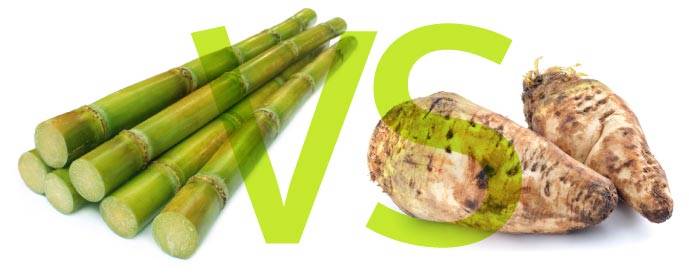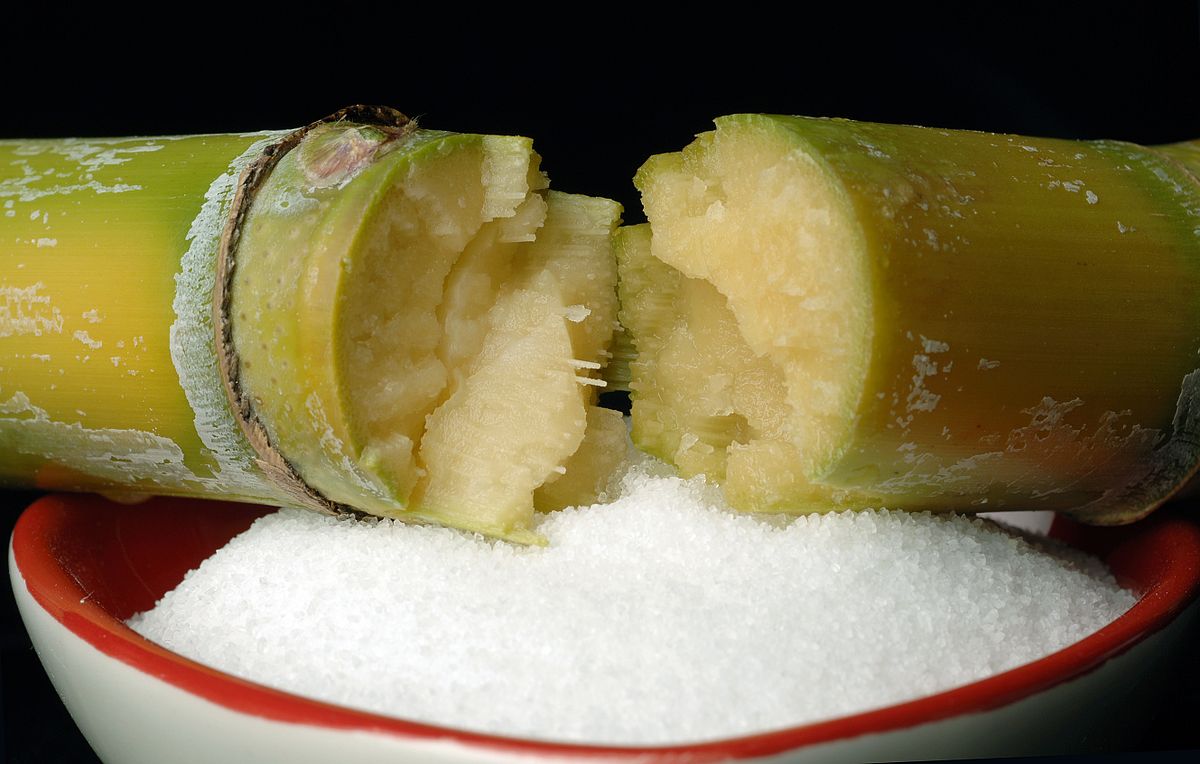The Science Behind Cane Sugar Processing: How Sweet Taste is Fine-tuned
The Science Behind Cane Sugar Processing: How Sweet Taste is Fine-tuned
Blog Article
An Extensive Guide to the Ecological Impact and Sustainability Practices in Walking Stick Sugar Handling
The environmental impact of cane sugar processing offers a complicated range of challenges that warrant mindful evaluation. From soil destruction and too much water usage to the carbon impact connected with farming and production, the consequences of standard techniques are far-ranging. In contrast, the adoption of ingenious sustainability actions supplies a pathway towards much more responsible production techniques. Understanding the interaction between these concerns is vital for stakeholders in the industry. What certain methods can be carried out to strike a balance between productivity and ecological stewardship? The solutions exist in a more detailed take a look at both the difficulties and prospective solutions.
Review of Walking Cane Sugar Handling
Walking stick sugar handling entails a collection of systematic steps that change sugarcane into polished sugar. At first, gathered sugarcane is transferred to refining facilities, where it undergoes cleaning up to eliminate dirt and particles. Following this, the walking stick is crushed to draw out juice, which is then clarified by eliminating pollutants through heating and the enhancement of lime.
The clarified juice undergoes dissipation, where water is eliminated to concentrate the sugar content. These crystals are divided from the continuing to be syrup using centrifugation, resulting in raw sugar.
The last item is after that dried out and packaged for circulation. Throughout this whole procedure, maintaining effectiveness and top quality control is essential to guarantee the sugar meets sector requirements. Each action in walking cane sugar handling not just adds to the end product but additionally has implications for source use and waste generation, establishing the stage for conversations on sustainability and ecological impacts associated with sugar production.
Ecological Obstacles of Manufacturing
The manufacturing of cane sugar offers numerous significant ecological challenges that warrant focus. One main issue is the extensive use agrochemicals, consisting of pesticides and plant foods, which can cause soil degradation, biodiversity loss, and contamination of local water sources. The overflow from sugarcane fields frequently carries these chemicals right into nearby communities, disrupting marine life and affecting the health of areas reliant on these water bodies.
One more challenge is the high energy intake linked with sugarcane handling. The boiling and refining phases need significant heat, largely produced by burning nonrenewable fuel sources, contributing to greenhouse gas emissions. In addition, the expansive land location required for sugarcane farming can cause deforestation and environment destruction, more exacerbating environment adjustment and threatening wild animals.
In addition, the labor methods in some areas increase ethical issues, as workers might encounter bad working problems and inadequate salaries. This circumstance frequently perpetuates a cycle of hardship in local neighborhoods. Cane Sugar Processing. Resolving these environmental obstacles is important for creating extra sustainable practices in walking cane sugar production, inevitably profiting both the setting and the communities associated with this industry
Water and Land Usage Impact
Water resources and land use are important parts in the walking stick sugar market that substantially affect the setting. The growing of sugarcane requires considerable water input, with quotes suggesting that it can eat as much as 2,000 litres of water per kilo of sugar created. This intensive use of water usually leads to deficiency of neighborhood water sources, affecting not only the sugarcane ranches but additionally bordering environments and communities that depend on the same water sources for farming and residential usage.

Moreover, land use for sugarcane cultivation can cause deforestation and the conversion of all-natural habitats right into monoculture ranches. This technique reduces biodiversity, interferes with regional environments, and adds to dirt degradation. The expansion of sugarcane fields typically trespasses on beneficial agricultural land, producing competition for sources between food and biofuel manufacturing.
Sustainable practices, such as enhancing watering methods and carrying out crop rotation, are necessary to reduce these impacts. By adopting a lot more effective water use and land administration methods, the cane sugar industry can minimize its ecological footprint, making certain a balance between farming performance and environmental preservation.
Greenhouse Gas Emissions
Greenhouse gas exhausts stand for a significant environmental concern within the cane sugar handling industry, specifically as agricultural methods increase to meet worldwide demand. The growing of sugarcane, a crop that thrives in exotic climates, counts heavily on synthetic fertilizers and pesticides, which contribute to nitrous oxide exhausts. In addition, land-use changes, including deforestation for brand-new sugarcane ranches, launch co2 saved in plants and dirt.
Throughout processing, energy consumption is one more significant resource of greenhouse gas exhausts - Cane Sugar Processing. Numerous sugar mills utilize fossil gas to power machinery and generate warm, leading to considerable carbon footprints. Furthermore, the transport of raw sugarcane and finished products adds layers of discharges via gas burning in lorries
The cumulative effect of these discharges aggravates environment modification, posing threats not just to the atmosphere but likewise to the long-lasting practicality of the industry. Stakeholders should acknowledge the urgent requirement for detailed strategies that address these exhausts. This entails evaluating current agricultural practices, processing methods, and transportation systems to identify locations for renovation and reduction. Addressing greenhouse gas exhausts is crucial for promoting a much more lasting walking stick sugar sector in a changing environment.

Sustainable Practices and Innovations
Sustainable techniques click to read more and advancements are increasingly essential in the cane sugar processing sector as stakeholders look for to minimize ecological impacts while maintaining performance. One considerable innovation is the execution of integrated plant administration, which enhances resource use by incorporating soil management, bug control, and plant rotation techniques. This method enhances return while decreasing chemical inputs and maintaining dirt health and wellness.
Furthermore, the adoption of renewable resource sources, such as biomass from sugarcane deposits, has obtained grip - Cane Sugar Processing. By transforming waste products into energy, refining centers can lower their reliance on fossil fuels, therefore decreasing greenhouse gas discharges
Water administration techniques have actually likewise seen improvements via the recycling and reusing of water in processing plants, substantially minimizing freshwater intake. Innovations in modern technology, such as accuracy agriculture, enable farmers to keep track of crop health and wellness and resource use better, making certain lasting farming techniques.
Moreover, qualification programs like Fair Profession and Jungle Partnership motivate eco liable farming techniques and promote social equity within the supply chain. By welcoming these sustainable techniques and technologies, the walking cane sugar handling market can enhance its strength and contribute favorably to ecological stewardship.
Final Thought
The environmental influence of walking stick sugar processing offers significant obstacles, consisting of soil destruction, high water intake, and greenhouse gas discharges, alongside moral concerns associated with labor practices. Attending to these concerns via lasting techniques, such as incorporated crop management, renewable resource fostering, and water recycling, is vital. By advertising socially equitable and ecologically see it here accountable methods in sugar manufacturing, the market can alleviate its negative results, ensuring a much more lasting future for both ecosystems and communities entailed in this field.
Walking stick sugar processing entails a series of methodical actions that transform sugarcane into refined sugar. Each step in cane sugar processing not just contributes to the final product however additionally has effects for resource usage and waste generation, setting the phase for discussions on sustainability and ecological impacts connected with sugar production.
Greenhouse gas emissions represent a significant environmental issue within the cane sugar handling industry, particularly as farming techniques broaden to satisfy international need.Sustainable practices and advancements are increasingly crucial in the cane sugar handling industry as stakeholders look for to lower ecological influences while keeping performance.The environmental impact of walking cane sugar processing offers considerable challenges, consisting of soil deterioration, high water usage, and greenhouse gas why not look here discharges, along with moral worries associated to labor techniques.
Report this page